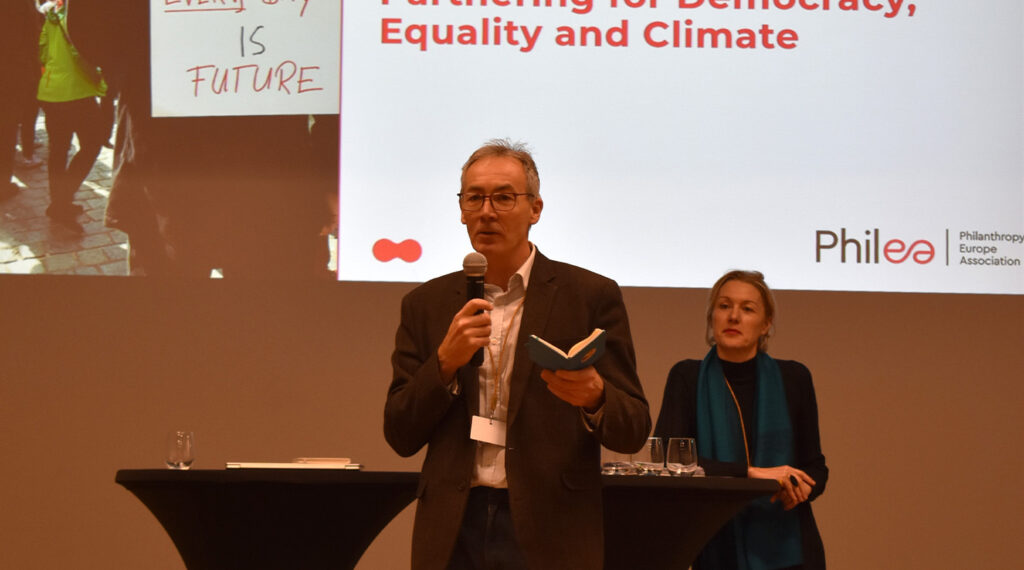Scenario thinking in action

We are caught up in the present, which has been shaped by the past, and we often struggle to find the time and resources to look ahead in order to influence or prepare for the future. It is no wonder that philanthropic institutions can get somewhat entrenched tackling one crisis after the next in the same old ways.
Taking time, even if it is hypothetical and playful, to engage in scenario thinking can help us become unstuck. It can lift us out of the here and now and, and by exploring a range of scenarios, can open minds and stimulate creative and innovative thinking. By engaging in scenario thinking we are not attempting to predict the future but to consider the implications of various scenarios. This can help us prepare to be able to act effectively in the future and, if possible, to ‘backcast’, to inform decision-making on action that can be taken now, to prevent a scenario from arising, to reduce its impact or to help ensure recovery. This could range from investment in systems change through to preparing for and building relationships with others so that resources can be mobilised quickly if needed in the future to address exceptional circumstances, should the scenario become a reality.
Philea’s Europhilantopics 2023 provided the space for a brief scenario thinking exercise. The basis for this was Peter Turchin’s historical analysis found in “The End Times: Elites, Counter-Elites and the Path of Political Disintegration” which highlights the causes and consequences of ‘wealth pumps’ in wealthy economies that enrich well-placed elites and immiserate everyone else who respond with devastating backlashes that afflict their societies with discord and, at worst, civil war. Of four possible scenarios we were cast for the moment into a dystopian future – one of societal collapse, and challenged to address the question – what can philanthropy do?
Such an exercise highlights high level fundamentals for philanthropic institutions, from resource limitations to the potential of niche interventions made possible by independence and leverage, but it also brings out specifics such as priority issues / areas for intervention. It helps identify where philanthropy can be most impactful or perhaps even suggest where investment is futile. Critically, the value of the exercise is enhanced by bringing in different perspectives, in this case from EU policy makers.
Four groups conducted the exercise and what was particularly interesting was how much their responses had in common. These revolved around three dimensions:
- Rebuilding trust and repairing social and civil society fabric: through investing in social capital (in all forms – bonding, bridging and linking) and supporting community organising and civic education. Some of the preventative actions suggested included investing in general operational support for civil society organisations, networks, and movements that work to engage citizens and increase solidarity at local level and encouraging engagement between elites and counter-elites. It extended however to conflict prevention and mediation, at local level through for example investment in a ‘peace force’;
- Shifting from a narrative of despair: by ‘holding the line’, ensuring that communication channels are kept alive (in particular between ‘islands of stability’), safeguarding independent media and investigative journalism, and investing in political and community leadership and in charismatic individuals and opinion-leaders to revert the gloomy narrative around social collapse and to promote a hope-based vision of social cohesion;
- Tackling immiseration: by empowering citizens and civil society organisations to stand up for themselves and to claim their right to basic needs. This included supporting participatory processes but also the use of strategic litigation and action where appropriate, for example in relation to the provision of social housing.
Authors

